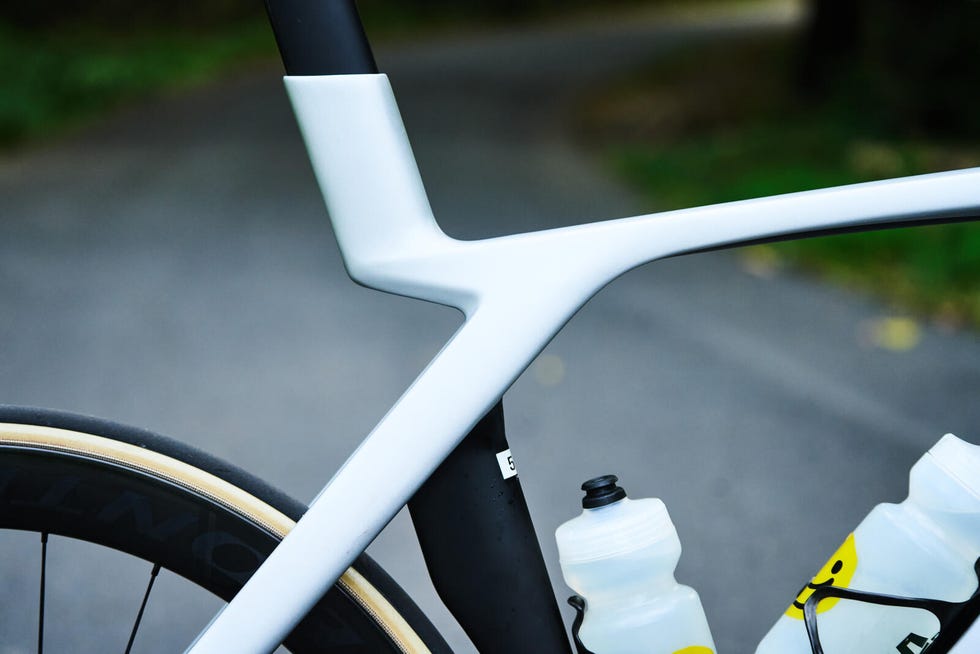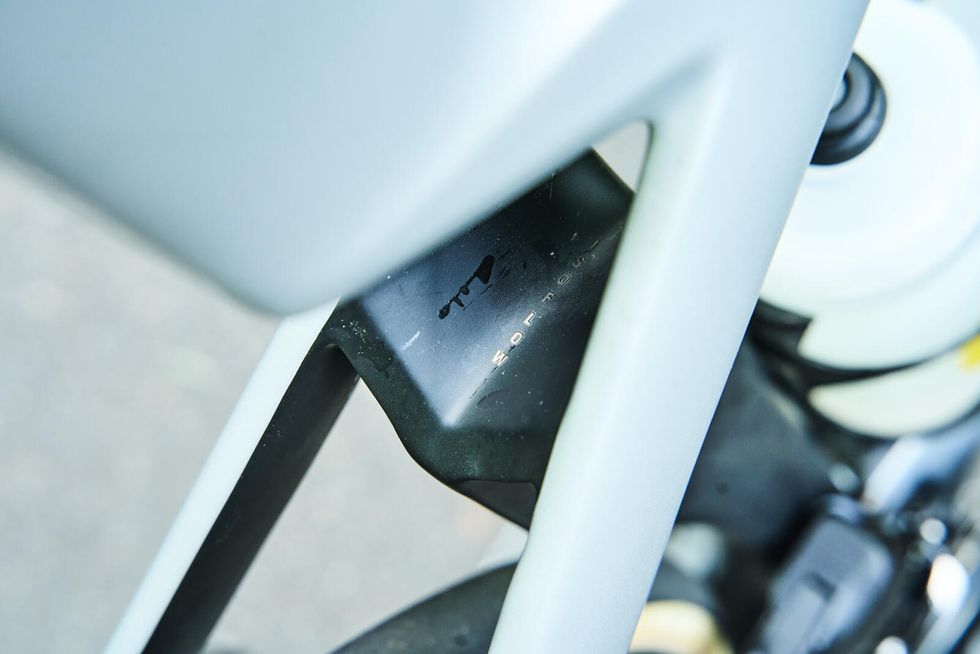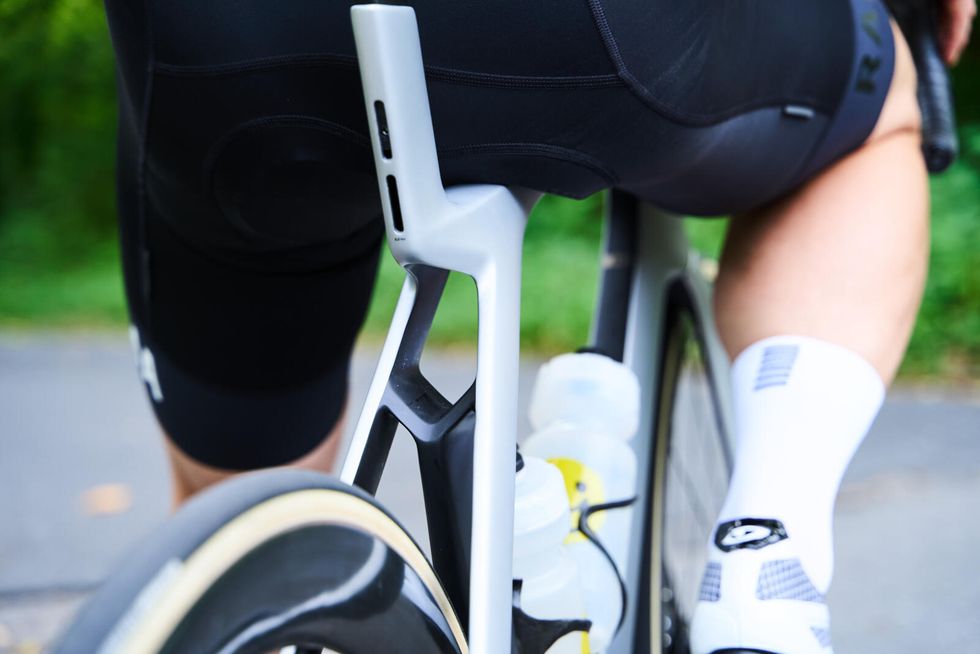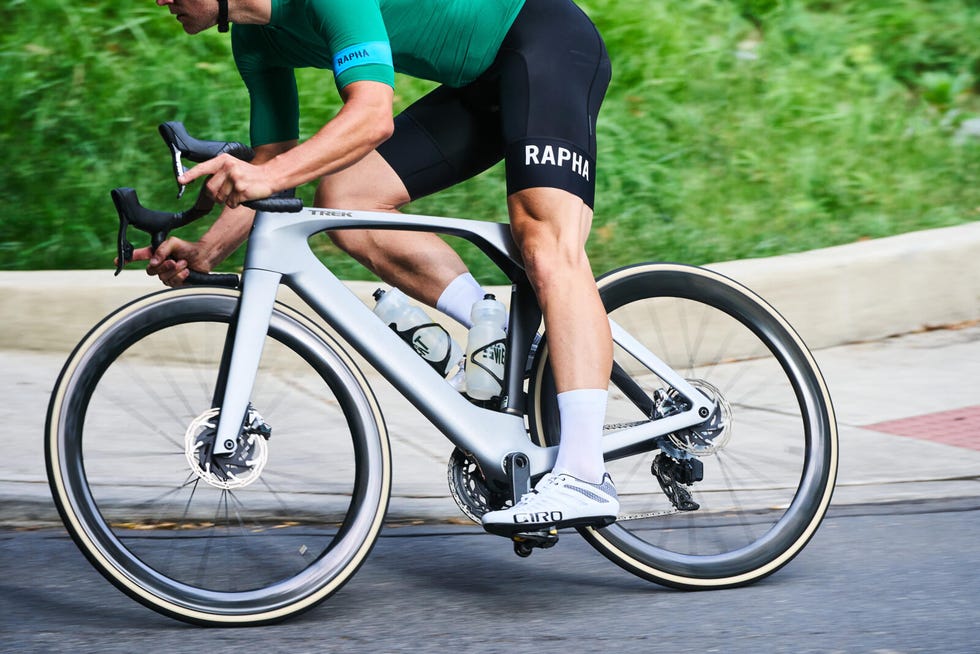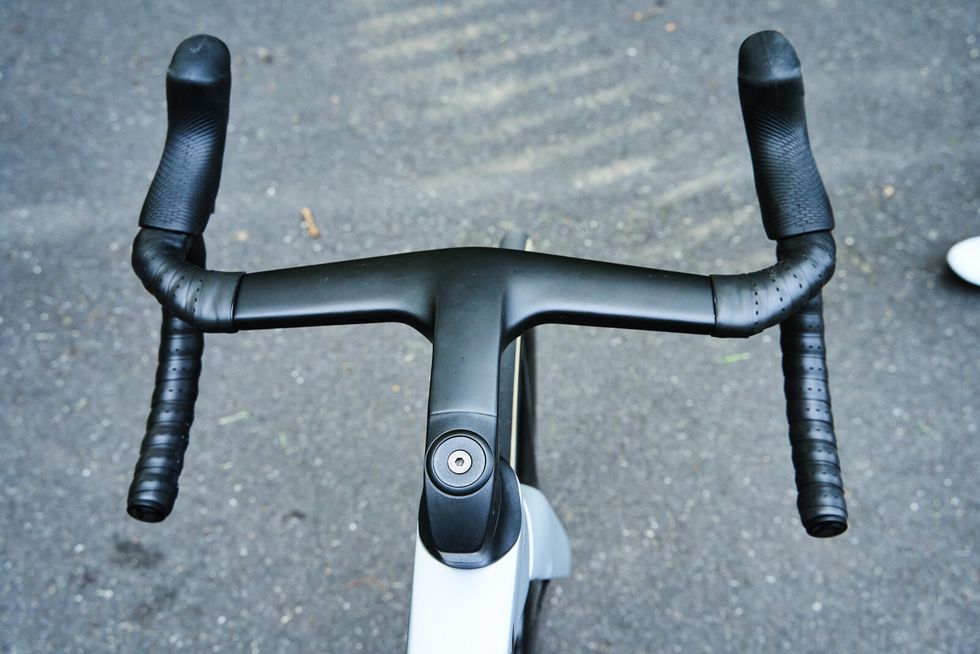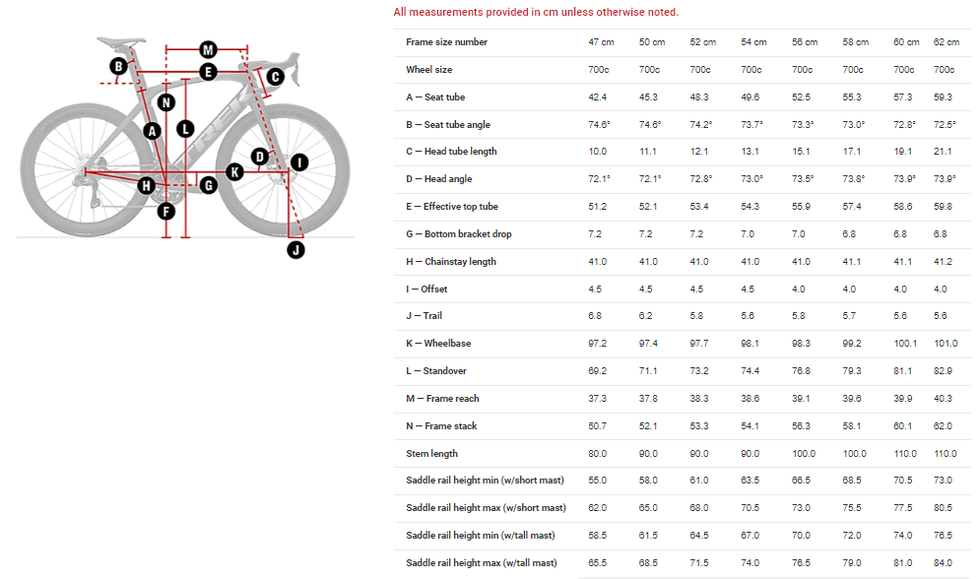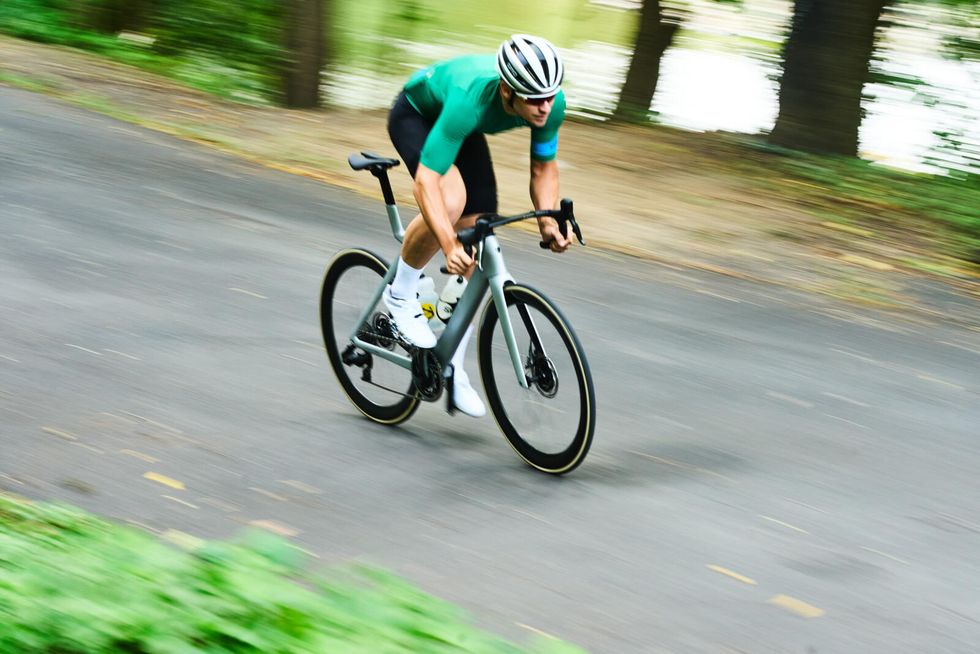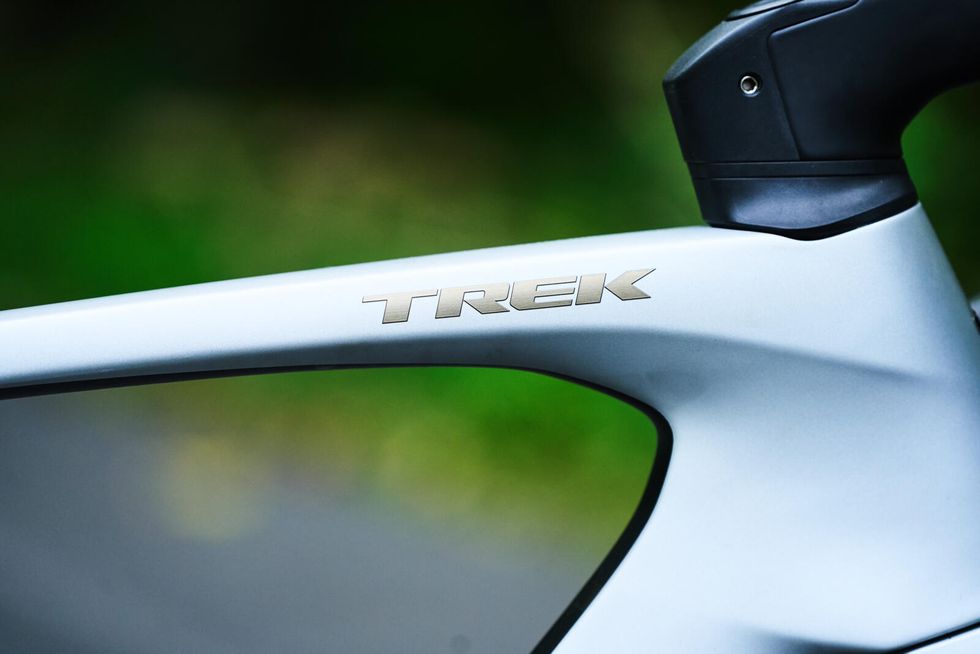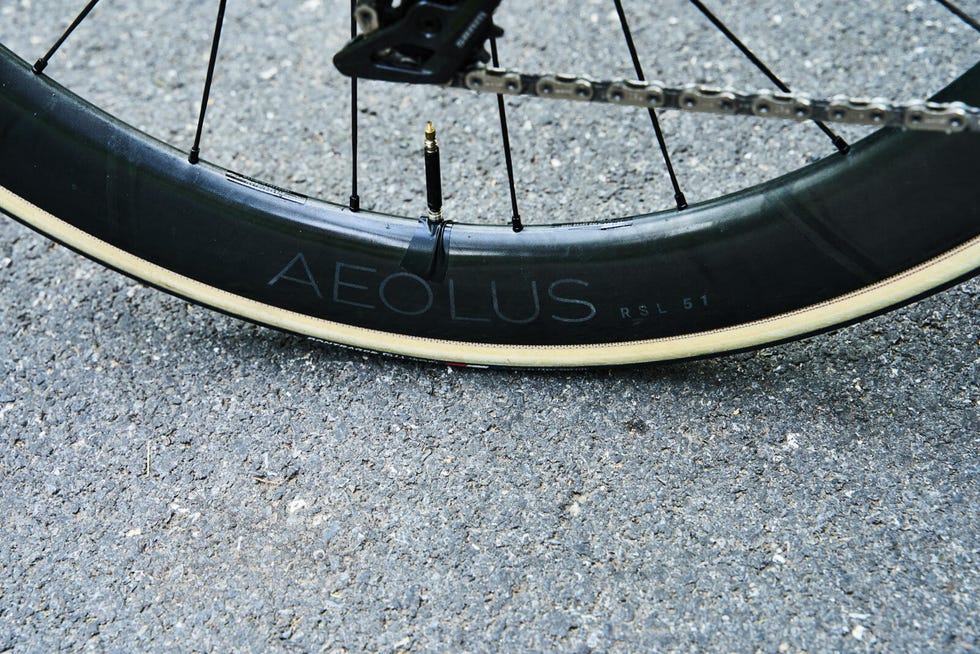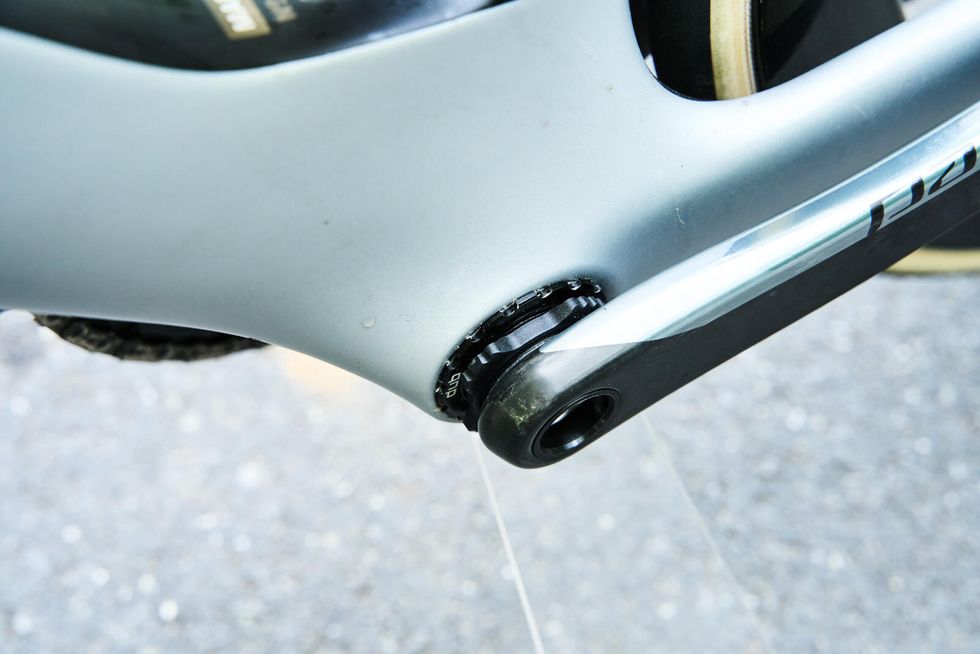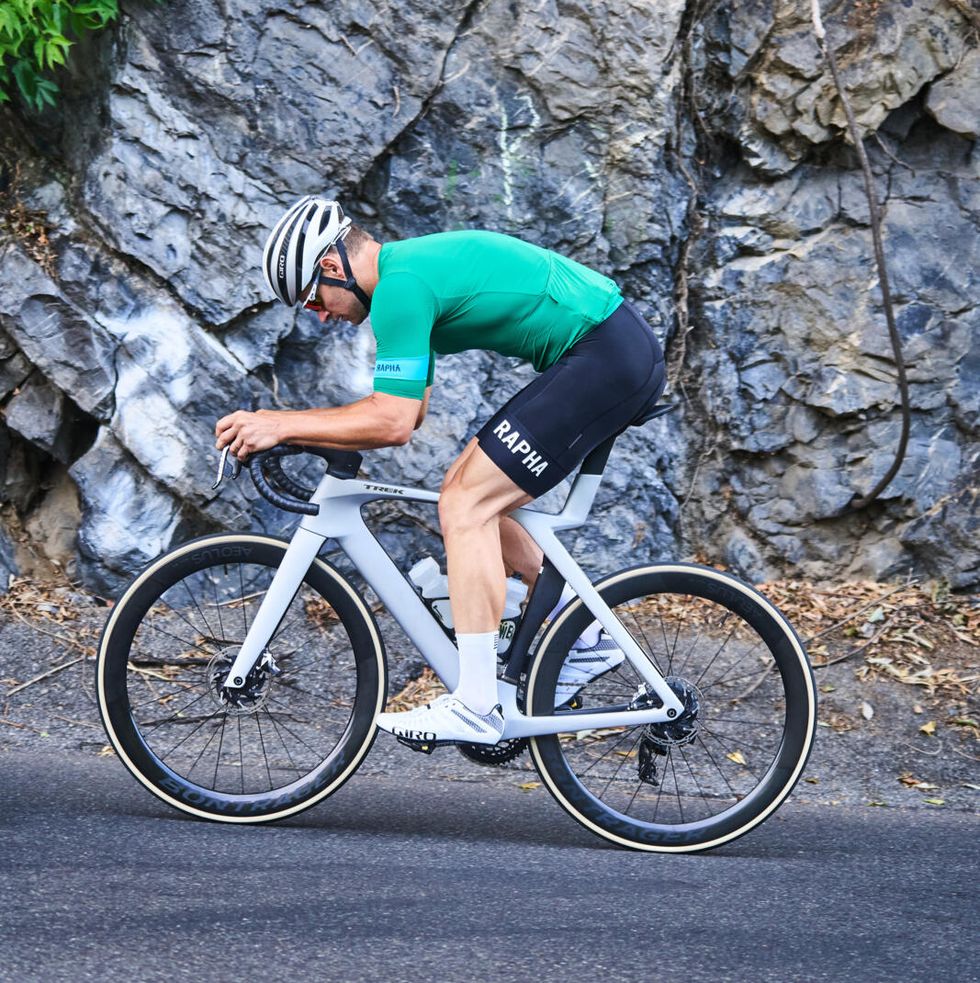RIDDEN: Trek’s World Tour Race-Ready Madone SLR
Trek's seventh-generation Madone SLR is designed to go fast, and win bike races, while retaining a remarkable amount of comfort.
Takeaway: A pure-bred road race bike designed to win at the WorldTour level. With its latest Madone SLR , Trek ditches the IsoSpeed decoupler for the new lighter weight, more aerodynamic, and visually radical IsoFlow seat mast.
- Drops weight and gains efficiency.
- Proven geometry remains unchanged from the gen-6 model.
- Flared bars for reduced drag.
- SRAM and three Shimano build kit offerings.
Trek’s Madone SLR is an iconic bike. First launched in 2003, the Madone has evolved massively over the past two decades. The platform’s most significant technological leap came about in 2014 when Trek debuted the Emonda, its dedicated lightweight bike. The Emonda freed the Madone from having to strictly be a light bike, allowing aerodynamics to become its primary focus.
To deal with the notoriously stiff and uncomfortable ride of early aero bikes, Trek’s engineers incorporated an IsoSpeed decoupler, similar to the one used on the brand’s Domane endurance bike. With IsoSpeed, the bike’s seat tube moved independently from the top tube and seat stays, allowing it to absorb road chatter and small bumps. The resulting sixth-generation Madone was incredibly fast against the wind while also receiving praise for its ride quality. But the downside was the added weight.
According to Trek, function drove IsoFlow’s development. Aided by computational fluid dynamics (CFD), Trek sought to overhaul the entire aerodynamic package of the Madone. The result was a new generation of Trek’s Kammtail tube shapes, including a smoother head tube, a down tube better optimised for use with and without bottles, a taller bottom bracket area, and the radically designed seat tube.
The new Madone is bold and will not be mistaken for any other bike. But it definitely won’t please riders who prefer a more traditional aesthetic. Trek deserves props for pushing the design language of a bicycle forward. Though its looks won’t please everyone, I’m happy to see something other than a cookie-cutter, dropped-stays, aero-ish, all-around-er that seems so popular amongst bike designers.
The new seat mast set-up is well-designed, offering easy and consistent height adjustment. But the best detail was in the seat clamp, which allowed for fore and aft adjustment independent of saddle tilt. It’s a small detail that makes setting up the bike much easier, as it allows for minor saddle angle tweaks while leaving it clamped in place.
These changes account for roughly half of the aerodynamic improvements of the new bike. Trek claims that the new Madone saves riders 19 watts of pedalling energy at 45km/h, but just half of that savings (9.3 watts) is from improvements to the frame. The remaining watt savings come from changes to the rider position due to the new flared handlebar design. The Madone SLR handlebar measures a traditional width in the drops, but the bar’s flare positions the hoods inward by 30mm. This narrower hood location puts the rider in a more aerodynamic position when riding, thus saving watts.
More importantly for pro riders and weight weenies alike, the new frameset is now two-thirds of a pound lighter than its predecessor. Our 56cm test bike came in at 7.3kg, which is pretty svelte for an aero bike with 51cm deep clincher wheels and disc brakes. A big part of the weight saving comes from the new IsoFlow design. The cantilevered design of the seat tube and IsoFlow allows for engineered flex in the new Madone. This design is how Trek maintains the Madone’s celebrated ride quality.
Geometry
Trek stuck to its H1.5 geometry as used on the previous generation Madone. It conceived this as a meeting point between Trek’s old racing-focused H1 geometry and its more relaxed H2 angles. The wheelbase on our 56cm bike was only 983mm, nearly a centimetre shorter than the Specialized Tarmac SL7 and Giant’s TCR, and 13 mm shorter than Canyons Ultimate. Combined with a relatively steep 73.5-degree head tube angle and a 58mm trail figure, you get a bike that will dive into corners as hard as you’re willing to push it.
Pricing and Build Options
There is no getting around the fact that as the top-of-the-line road racing bike from Trek, the Madone is not cheap. The move to electronic-only groups on all builds of the Madone does the price no favours as well. While equivalent new models of the Madone only get a couple of grand more expensive for 2023. The entry-level build for the 2023 Madone SLR 6 (with AXS) comes in at R140 000. Top-of-the-range Dura-Ace and Red eTap builds retail for R210 000 and R190 000, respectively. The ‘entry level’ 105 Di2 bike goes for R130 000.
Trek offers the new Madone in six builds. All of the Madone builds ship with the new integrated cockpit; Dura-Ace and Red-equipped Madones ship with Bontrager Aeolus RSL 51 wheels, while all other builds get the slightly heavier Aeolus Pro 51.
Ride Impressions
The new Madone has an exceptionally smooth ride, lacking the characteristically dead and harsh feel of past aero bikes. But the mellow ride is not without an edge. The Madone does an exceptional job of balancing all-day comfort with the agility and aggression needed to be a top-tier race bike. Under sharp accelerations, especially at speeds under 40km/h, the Madone felt impressively stiff. But accelerations from the high 30s into 45+km/h territory felt a bit more muted, which is not inherently a bad trait. A twitchy bike is not helpful when you’re going that fast.
Another thing missing from the bike was a computer mount. Usually, it is not something I would expect a brand to include, but the bars require a Trek-specific part. Given the complete bike’s price tag and Trek’s integrated cockpit, it should come with a computer mount. I sourced a Blendr mount from my local Trek store, but it was not without its issues (it rattled loose during a training race and fell off). It is possible to entirely avoid this proprietary part by using a standard 1-⅛” stem and handlebar but making this swap would involve cutting hydraulic houses and would not be cheap.
I was also pleased to see Trek continue using the T47 bottom bracket standard on this bike. A threaded bottom bracket shell is a win for mechanics everywhere. However, the latest Madone is now only compatible with electronic shifting. We can argue whether it’s bike brands like Trek (releasing electronic-only high-end bikes) or component brands like SRAM and Shimano (no longer developing high-performance mechanical road groupsets) or if consumers are just voting with their dollars. But the result is that we are witnessing the death of mechanical shifting from high-end racing bikes. And that’s a little bit sad.
Ultimately this Madone, like the versions that have come before, was conceived and designed to meet the needs of World Tour professionals. Everything about the bike, from how it rides, to how much it costs, reflects that niche design requirement. Aside from a small pool of professional racers, very few people will likely make the most of this bike’s capabilities. It’s analogous to the way most drivers will not benefit from driving a Formula One car. It’s a pure-bred race bike designed to win at the highest level. If that’s what you’re looking to do—or you just want to own a bike with that ability—then the Madone should be on your shortlist.
READ MORE ON: madone SLR road bikes trek bikes trek madone




